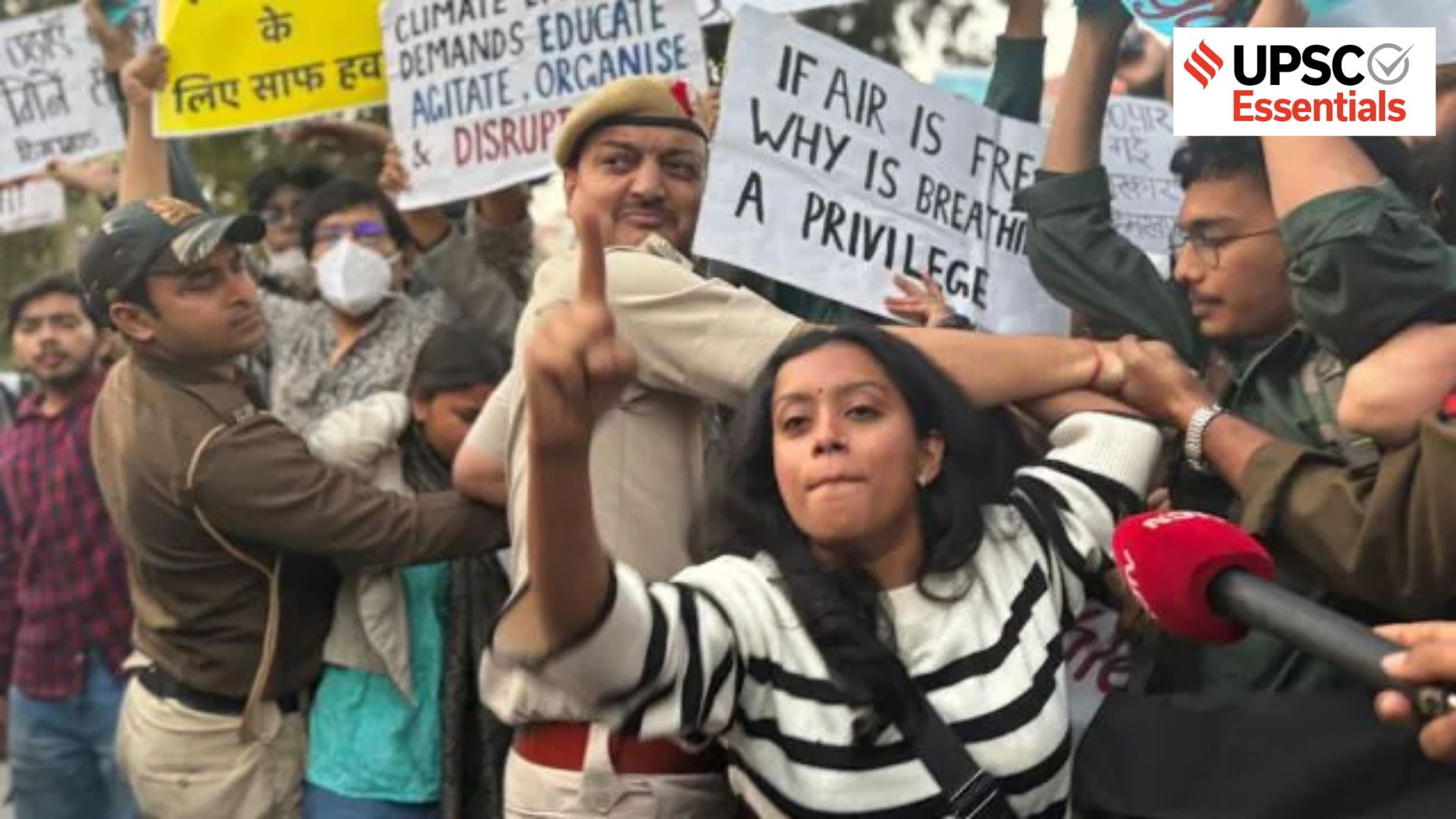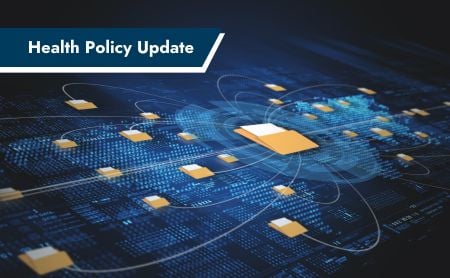Organized Labor’s Democratic Deficit – American Compass

Report on Organized Labor’s Democratic Deficit and Alignment with Sustainable Development Goals
Introduction: Labor Unions, Decent Work, and Institutional Accountability
The sustained decline in the American labor movement’s density, with private sector union membership falling below 6% in 2024, presents a significant challenge to the achievement of Sustainable Development Goal 8 (Decent Work and Economic Growth). This erosion of collective bargaining power has left a majority of workers feeling voiceless, undermining Target 8.8, which calls for the protection of labor rights and the promotion of safe and secure working environments for all. While factors like globalization and anti-union practices are contributors, a critical internal factor requires examination: the fraught relationship between organized labor and politics.
A renewal of the labor movement is essential for promoting economic equality and decent work. However, survey data indicates a broad aversion among workers to what they perceive as excessive union involvement in political affairs. This disconnect between union leadership’s political priorities and the preferences of its members creates a democratic deficit that threatens the institutional integrity of unions. This report analyzes this deficit through the lens of SDG 16 (Peace, Justice and Strong Institutions), which emphasizes the need for effective, accountable, and transparent institutions. It proposes reforms to ensure unions are more responsive and accountable to the workers they represent, thereby strengthening their capacity to advance decent work for all.
The Discrepancy Between Union Activities and Worker Priorities
Worker Preferences vs. Union Political Engagement
Research highlights a clear preference among workers for unions to prioritize their core mandate, which aligns directly with SDG 8. These core functions include:
- Negotiating for better wages and working conditions.
- Enforcing collective bargaining agreements.
- Representing workers in disputes.
- Providing training and benefits.
By a three-to-one margin, potential members prefer a worker organization focused solely on workplace issues over one engaged in national politics. For those who would vote against joining a union, political involvement is the primary reason. This suggests that the current model of political engagement, which often delves into polarizing issues far removed from the workplace, acts as a barrier to organizing and expanding worker protections, thereby impeding progress on SDG 8.
The Democratic Deficit in Political Representation
The political activities of labor unions often exhibit a significant gap between leadership’s actions and the diverse views of the rank-and-file. Unions provide near-unanimous support to one political party, despite a membership that reflects the broader political diversity of the American public. This practice raises serious questions about institutional accountability and representation, central tenets of SDG 16.7 (Ensure responsive, inclusive, participatory and representative decision-making at all levels).
When unions take public stances on contentious issues such as climate policy, reproductive rights, or foreign conflicts without robust consultation, they risk alienating current and prospective members. This unilateral approach undermines the principle that a union’s power is derived from its members. If political advocacy is deemed essential to a union’s mission, its duty to represent its members fairly must extend to this domain, ensuring that political actions are the result of a democratic and consultative process.
Legal Frameworks for Union Accountability
Exclusive Representation and the Duty of Fair Representation (DFR)
U.S. labor law grants certified unions the power of exclusive representation, meaning they are the sole bargaining agent for all employees in a unit, including non-members. This legal privilege is foundational to achieving the stability and collective power necessary for advancing SDG 8. However, this power is not absolute. It is balanced by the Duty of Fair Representation (DFR), a legal doctrine established by the Supreme Court.
The DFR mandates that a union must represent all workers in its bargaining unit “fairly, impartially, and in good faith.” Its origins in combating racial discrimination within unions directly connect to SDG 10 (Reduced Inequalities). The doctrine prohibits a union from engaging in conduct that is arbitrary, discriminatory, or in bad faith. While historically applied to workplace matters like contract negotiation and grievance handling, the principles of the DFR are directly applicable to the modern union’s role as a political actor. Leveraging exclusive representation status for political activism without consulting the represented workers constitutes arbitrary action and fails the test of fair representation.
Financial Contributions and Beck Rights
Union dues and agency fees fund a union’s activities. While direct contributions to federal political campaigns must come from voluntary PAC donations, general union funds can be used for a wide range of political and ideological advocacy. The Supreme Court case Communications Workers of America v. Beck established that non-member employees cannot be compelled to fund such non-representational activities.
However, the current framework requires a worker to resign from union membership to exercise these “Beck rights,” forcing a choice between full participation in workplace democracy (e.g., voting on contracts) and the right to not fund political speech with which they disagree. This arrangement undermines the development of strong, participatory institutions as envisioned by SDG 16.
Policy Recommendations for Enhancing Democratic Accountability
To address the democratic deficit within organized labor and better align union practices with the principles of the Sustainable Development Goals, the following policy actions are recommended:
1. Enforce the Duty of Fair Representation for Political Activities
To ensure unions operate as accountable and transparent institutions (SDG 16.6), the DFR should be consistently applied to their political and ideological activities. A union claiming to speak for its members in the political arena must first make a good-faith effort to consult them. Failure to do so should be considered a breach of the DFR.
Pathways for implementation include:
- NLRB Adjudication and Guidance: The National Labor Relations Board (NLRB) can establish precedent through case adjudication and issue formal guidance clarifying that the DFR applies to political advocacy, setting clear standards for what constitutes meaningful member consultation.
- NLRB Rulemaking: The NLRB can use its formal rulemaking authority to create legally binding regulations that define a union’s DFR obligations regarding political engagement, establishing transparent criteria for compliance.
- Statutory Amendment: Congress can amend the National Labor Relations Act (NLRA) and Railway Labor Act (RLA) to explicitly codify the DFR and its application to all union activities, including political representation.
2. Expand and Strengthen Worker Rights on Political Spending
To strengthen the associational rights of workers and the integrity of unions as democratic bodies (SDG 16.7), the rights established in Beck should be expanded.
Key reforms should include:
- Decoupling Membership from Political Objections: Congress should amend federal labor law to allow workers to object to funding non-representational activities without being forced to resign their union membership. This would allow them to retain their right to participate in internal union governance, such as ratifying contracts or authorizing strikes.
- Establishing an “Opt-In” Standard: The current “opt-out” model should be replaced with an “opt-in” system. Unions would be required to obtain affirmative consent from each member before using any portion of their dues for political or ideological purposes not directly related to workplace representation. This would ensure that political funding is explicitly voluntary and transparent.
- Clarifying “Chargeable” Expenses: To support the core mission of unions in advancing SDG 8, Congress should explicitly classify expenses related to organizing new workers as “chargeable,” recognizing that growing the labor movement directly strengthens the bargaining power of all represented employees.
By implementing these reforms, policymakers can help realign labor unions with their core mission of advancing decent work, strengthen their institutional integrity, and ensure they operate as truly democratic and representative bodies in line with global development principles.
Analysis of SDGs, Targets, and Indicators
1. Which SDGs are addressed or connected to the issues highlighted in the article?
SDG 8: Decent Work and Economic Growth
The article is fundamentally centered on the role and function of labor unions in the United States. It discusses the decline in union membership, the importance of unions for worker representation, collective bargaining for better wages and working conditions, and the protection of labor rights through legal frameworks like the National Labor Relations Act (NLRA) and the Railway Labor Act (RLA). These topics are all core components of SDG 8.
SDG 10: Reduced Inequalities
The article addresses inequality in several ways. It highlights the power imbalance between employers and employees, which unions aim to mitigate. Furthermore, it delves into the historical origins of the Duty of Fair Representation (DFR), which was established to combat racial discrimination within unions, as exemplified by the Steele v. Louisville & Nashville Railroad case involving Black firefighters. The current argument extends this principle to prevent discrimination against members based on their political views, thus touching on equal opportunity and fair treatment for all workers within a bargaining unit.
SDG 16: Peace, Justice and Strong Institutions
A primary theme of the article is the “democratic deficit” within labor unions, which are presented as key institutions in industrial relations. The analysis calls for these institutions to be more accountable, transparent, and responsive to their members. The discussion revolves around ensuring representative decision-making, particularly in political matters, and providing legal recourse for members whose views are not fairly represented. The proposed policy reforms, such as enforcing the DFR and expanding Beck rights, are aimed at strengthening the governance and justice mechanisms within these institutions.
2. What specific targets under those SDGs can be identified based on the article’s content?
SDG 8: Decent Work and Economic Growth
- Target 8.8: Protect labour rights and promote safe and secure working environments for all workers. The article extensively discusses the legal frameworks (NLRA and RLA) that govern labor-management relations and establish the right to organize and bargain collectively. The core function of unions is described as channeling worker voice, negotiating better conditions, and enforcing collective bargaining agreements, all of which are central to protecting labor rights.
- Target 8.5: By 2030, achieve full and productive employment and decent work for all…and equal pay for work of equal value. The article identifies a union’s raison d’être as “negotiating better wages and conditions with their employers.” This directly supports the goal of achieving decent work and fair compensation for workers through collective action.
SDG 10: Reduced Inequalities
- Target 10.3: Ensure equal opportunity and reduce inequalities of outcome, including by eliminating discriminatory laws, policies and practices. The article’s historical analysis of the Duty of Fair Representation (DFR) is rooted in this target. It explains that the DFR was established in the Steele case to combat a union’s discriminatory collective bargaining agreement that “disadvantaged black firefighters.” The author argues for extending this principle to prevent discrimination based on political affiliation, ensuring all members are represented fairly.
SDG 16: Peace, Justice and Strong Institutions
- Target 16.6: Develop effective, accountable and transparent institutions at all levels. The article’s central critique is that organized labor suffers from a “democratic deficit.” It argues that unions are not accountable to their members when engaging in political advocacy and that their spending is not transparent. The proposed reforms aim to make unions more accountable and responsive institutions.
- Target 16.7: Ensure responsive, inclusive, participatory and representative decision-making at all levels. This target is directly addressed by the article’s main argument. It provides evidence that union leadership’s political activities are often not representative of the members’ preferences. The article calls for unions to “make a meaningful effort to discern the will of those they purport to represent” and suggests methods like “polling or member referenda” to ensure participatory decision-making.
3. Are there any indicators mentioned or implied in the article that can be used to measure progress towards the identified targets?
Indicators for SDG 8 Targets
- Union Membership Rate (Indicator for Target 8.8): The article provides a direct quantitative indicator of the exercise of labor rights by stating, “Fewer than 6% of workers in the private sector were members of a union in 2024,” and contrasts this with the historical high when unions “represented a third of all workers.” This statistic measures the prevalence of collective bargaining.
Indicators for SDG 16 Targets
- Surveys on Worker Preferences vs. Union Activities (Indicator for Target 16.7): The article cites specific survey data that measures the gap between institutional actions and member preferences. For example, “Potential union members would ‘prefer a worker organization that focuses only on workplace issues to one that is also engaged in national political issues’ by a three-to-one margin.” This indicates a lack of representative decision-making.
- Data on Member Priorities for Resource Allocation (Indicator for Target 16.7): The article provides another survey-based indicator: “When asked how much of a worker organization’s time and resources should go toward a range of activities, potential union members assign only 3% to politics.” This quantifies the disconnect between union spending priorities and member desires.
- Internal Polling Data on Political Alignment (Indicator for Target 16.7): The article points to a specific poll by the Teamsters union showing “59.6% support for Donald Trump and only 34% support for Kamala Harris.” This data serves as a direct indicator of the political views of the membership, which can be compared against the political endorsements and advocacy of the union’s leadership to measure representativeness.
Indicators for SDG 10 Targets
- Qualitative Evidence of Discriminatory Practices (Indicator for Target 10.3): The article uses the historical example from the Steele case, where a union contract “disadvantaged black firefighters by restricting their eligibility for certain jobs and promotions.” This serves as a qualitative indicator of discriminatory outcomes that policies like the DFR are designed to prevent and can be used as a baseline for assessing whether similar discrimination (e.g., based on political views) is occurring.
4. Create a table with three columns titled ‘SDGs, Targets and Indicators” to present the findings from analyzing the article.
| SDGs | Targets | Indicators |
|---|---|---|
| SDG 8: Decent Work and Economic Growth | 8.8: Protect labour rights and promote safe and secure working environments for all workers. |
|
| SDG 10: Reduced Inequalities | 10.3: Ensure equal opportunity and reduce inequalities of outcome, including by eliminating discriminatory… practices. |
|
| SDG 16: Peace, Justice and Strong Institutions | 16.6: Develop effective, accountable and transparent institutions at all levels. |
|
| 16.7: Ensure responsive, inclusive, participatory and representative decision-making at all levels. |
|
Source: americancompass.org

What is Your Reaction?
 Like
0
Like
0
 Dislike
0
Dislike
0
 Love
0
Love
0
 Funny
0
Funny
0
 Angry
0
Angry
0
 Sad
0
Sad
0
 Wow
0
Wow
0












































































